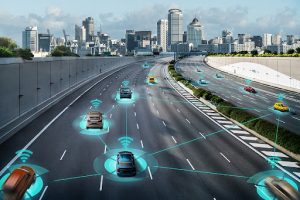 The Department of Transportation (DoT) has taken a leading role in the infrastructure plans of the Biden Administration. This connection makes sense given that the mission of the DoT is to "ensure America has the safest, most efficient and modern transportation system in the world, which boosts our economic productivity and global competitiveness and enhances the quality of life in communities both rural and urban." The success of their mission is contingent on the stability of roads, bridges, and rail lines -- key elements of our national infrastructure.
The Department of Transportation (DoT) has taken a leading role in the infrastructure plans of the Biden Administration. This connection makes sense given that the mission of the DoT is to "ensure America has the safest, most efficient and modern transportation system in the world, which boosts our economic productivity and global competitiveness and enhances the quality of life in communities both rural and urban." The success of their mission is contingent on the stability of roads, bridges, and rail lines -- key elements of our national infrastructure.
The bipartisan infrastructure agreement being used as a starting point for budget allocations includes America's largest-ever investments in public transit and bridge systems. The single largest part of the package consists of approximately $109 billion for roads, highways, and bridges. How this money is spent has yet to be determined. It could very well be distributed directly to states, cities and other local governments to repair their roads and bridges. From a federal perspective, currently Congress spends around $45 billion a year on highways and bridges. This plan would add on two years of spending to be used for federal grant programs run by the U.S. government or leveraged to underwrite private projects.
Separate from the giant infrastructure package, another meaningful transportation funding bill is also being developed with bipartisan support. This bill will provide $78 billion in funding or rail networks, major grant programs, and road safety agencies. A fourth of this money is dedicated to passenger rail with plans to improve the Amtrak service across the nation.
In today's world, all of these traditional infrastructure and construction projects have a technology spin. Embedding sensors in bridges, roads, and rail lines allows for real-time tracking of usage and conditions, paving the way for predictive maintenance. Maintenance teams in the field are armed with tablets and Internet connections to deliver real-time data to headquarters. Social media is even proving to be a reliable tool in measuring and predicting traffic patterns.
There are a number of events and resources that address the physical and technical aspects of a modernized transportation system.
- International Zero Emission Bus Conference (Sept. 15-17, 2021; Denver, CO) -- This is the primary event for professionals who are leading the charge to electrification - equipping school, transit, and shuttle bus managers with the necessary tools to electrify their fleets.
- AREMA 2021 Virtual Conference (Sept. 26-30, 2021; virtual) -- AREMA 2021 will provide an excellent opportunity for attendees to increase their railroad knowledge and find the resources to increase their knowledge about the industry through the latest innovations and technologies.
- APTA's TRANSform Conference & EXPO (Nov. 7-10, 2021; Orlando, FL) -- This event will connect attendees to what's now and what's next in the public transportation industry. Formerly APTA's Annual Meeting, APTA's TRANSform Conference is the only event where the entire transportation industry converges to learn, share and network.
- Beyond Traffic 2045 (white paper) -- When the United States Department of Transportation was created, the Secretary of Transportation was charged by law to report on both the current and the anticipated future conditions of our nation's transportation system. Beyond Traffic 2045 is U.S. DOT's most comprehensive assessment of current and future conditions in decades. It is a call to action.
- Raising Awareness of Artificial Intelligence for Transportation Systems Management and Operations (white paper) -- This report introduces the fundamentals of artificial intelligence (AI) technologies and the potential applications in transportation management system (TMS) and transportation management center (TMC) operations, showcases successful AI applications for TMSs, and provides a list of important issues to consider in developing AI applications.
- Integrated Modeling for Road Condition Prediction (white paper) -- The IMRCP tool gathers historical, real-time, and forecast data from a variety of sensor systems and models. IMRCP can benefit transportation agency operations by complementing other tools that use similar data sets. As shown in this paper, IMRCP extends user awareness of traffic and road conditions into the future, beyond the capabilities of typical TMC tools and road weather information systems.
Search through GovEvents for a complete listing of conferences, virtual events, and webinars, and GovWhitePapers for 1000+ white papers, case studies, and infographics.



